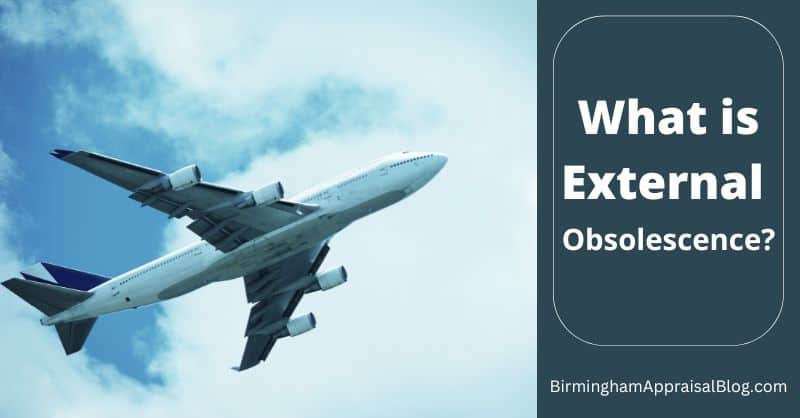A Look at External Obsolescence
External obsolescence is not something you hear about every day. If you are interested in purchasing real estate and choosing a property that retains its value then you may want to learn a little more about this form of depreciation that is not discussed much.

If you break down the phrase starting with the word external you get this: “coming or derived from a source outside the subject affected”. Then, looking at obsolescence you have this: “the process of becoming obsolete or outdated and no longer used.”
In real estate, becoming obsolete translates to a loss in value. So, External Obsolescence means a loss in value due to sources outside of the property.
Another term that is used interchangeably with External Obsolescence is Economic Obsolescence. Both mean the same thing and, as noted, are forms of depreciation.
This type of depreciation is not easily fixed like others. With physical depreciation you can update a house and reduce its effective age, making it appear to be newer than its actual age.
Because the depreciation comes from outside of the property it may be beyond the control of the owner to fix. The only solution may be to move the house, which is possible and has happened on occasion.
Because of the difficulty with curing this type of depreciation, it’s important to keep this in mind when buying property. A property with external obsolescence may not appreciate at the same rate as a similar one that is not subject to the same outside forces.
Types of External Obsolescence
By now you may be wondering what types of external obsolescence there is. Some examples included: homes located in close proximity to airports, heavily traveled highways, properties near foul-smelling businesses such as paper plants, food processing plants, or even properties subject to recent zoning changes.
Because these types of factors influence value, appraisers are required to identify and report how they affect the value of the property being appraised. This is done by collecting and analyzing sales data of similar nearby homes that have been subjected to the same outside factors as the subject.
This can be done in several ways, including matched pairs analysis, comparing the rental income of affected properties versus non-affected properties, and/or looking at land value differences in the cost approach.
In the sales comparison approach, the best way to estimate the value of the subject property is to use recent and similar sales of homes that are subject to the same outside influences. The external obsolescence will be “baked in” to the sale price meaning that the buyer would have considered the property’s location when making an offer.
If sales within the affected area are limited then outside sales can be used and location adjustments made to reflect the difference in location. Older sales can also be analyzed to determine percentage differences between the two locations and this adjustment can then be applied to recent sales.
If the property is in an area where rentals are common the income approach can also be used. Differences in rental rates between properties subject to external obsolescence and those that are not can be compared and used to estimate the value of the subject property.
Lastly, the cost approach can be used to provide support to the other two approaches to value. Using depreciated cost analysis, recent sales can be used to determine the land value and this can be compared to the land value of properties not affected by location to see any differences that may exist.
While adjustments for this type of depreciation are common they are not always the rule. Appraisers should not assume that just because the property is located in a certain location that it negatively affects the value.
Using sales from within the same neighborhood, and the same location is best because no location adjustment for external obsolescence is necessary. Using sales outside of the neighborhood requires a location adjustment if it can be supported.
Conclusion
As I noted previously, External Obsolescence is not typically easy to cure. Because of this, its negative impact on the market value of the property can be substantial.
By knowing this you can have more realistic expectations of what the market value of the property should be as well as how it might compare to other properties that have not been affected by outside influences.
If you have any other questions about External Obsolescence or the appraisal process feel free to contact me and as always, thanks for reading.
Great read!
Thanks!